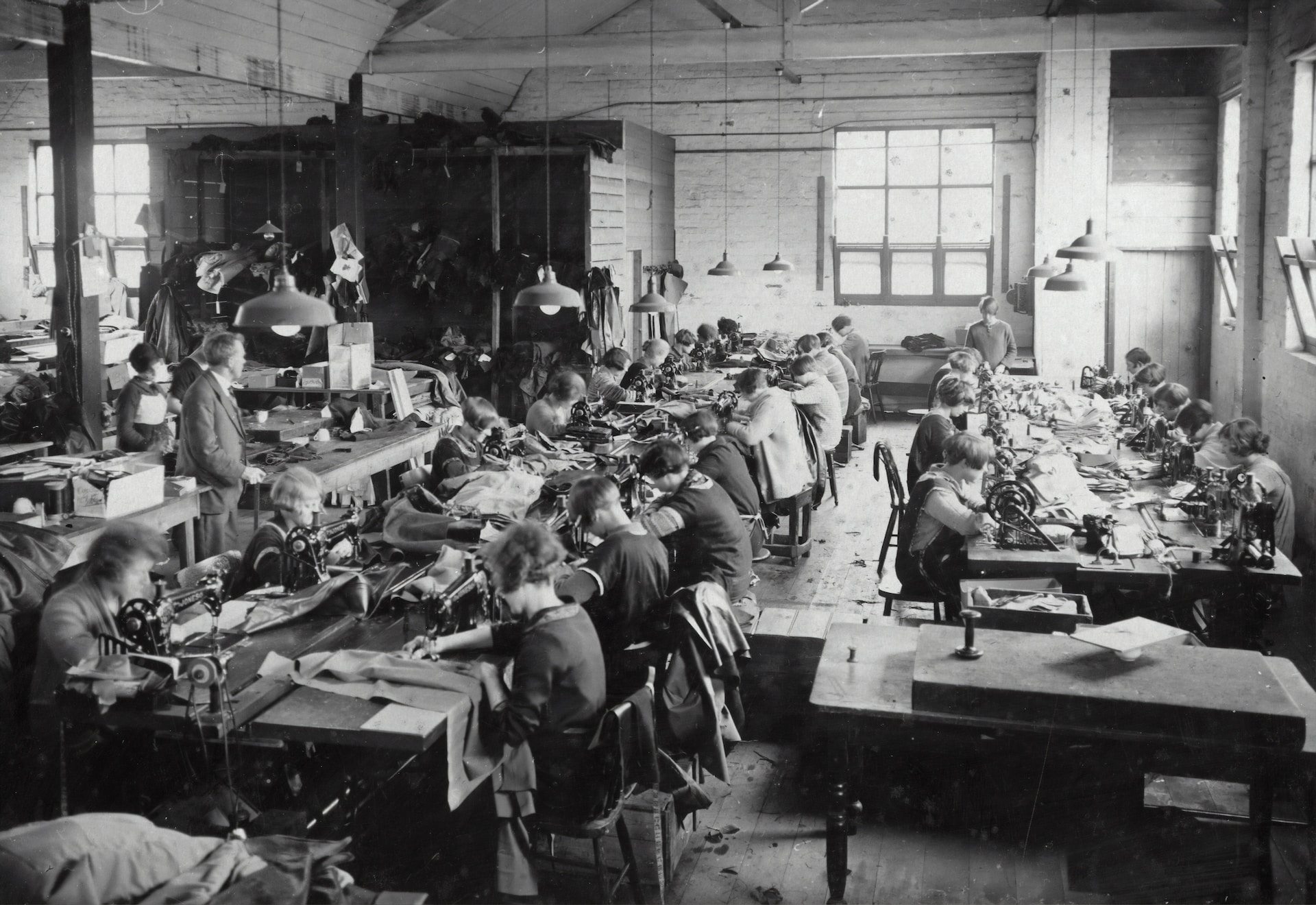Tools that track employee hours are ubiquitous in the world of work - whether one is a farm employee who has to punch in and out every working day, or a software developer who needs to track the the client projects that they’ve spent time on. Following a lively debate on this topic over brunch with friends, I decided to look into the value of these tools.
Timeline of Time-Tracking
For most of human history, work was essentially governed by factors that affect output such as the seasons, urgency, and basic supply & demand. For example, a farmer planted and harvested crops based on the seasons, the same farmer would get up in the middle of the night to help his cow give birth, and his neighbor the blacksmith would produce weapons on demand - familiar concepts of work that persist to this day.
However, the invention of the steam engine to power the factories of the Industrial Revolution changed the way in which large segments of the population worked - one that had to be able to sustain a high level of efficiency despite a continuous state of production. Such an efficient production model required a high degree of labor specialization where output was not produced by individual persons but was a result of parts of the work repetitively done by different groups of people - a child’s toy was no longer crafted by a single person, but was mass produced in small parts that were just put together towards the end.
Since mass production took the fate of the output away from the hands of an individual and put it into the collective effort of the many that formed the assembly line, the way people got paid also changed - that is, not per doll but by the hours they put in to make parts of that doll. Thus, people in factories in the 1800s started clocking in and out at work, where they inserted their timecards into a device that stamped the time when they started and finished their shifts.
This concept eventually found its way into what became known as “white-collar jobs”, with the popularization of the billable hour, a very familiar concept in legal practice and one that was originally intended to promote transparency in billing.
Fast forward to our high-tech world of today, and timecards have, for some jobs, evolved into the timesheets that are so beloved by management but, at best, tolerated by the rank and file.
A Necessary Evil
Regardless of the industry, timecards and timesheets are commonly used as a result of business realities that revolve around the legitimate interests of companies to stay compliant with labor laws, improve productivity and increase profitability.
This is even more pronounced in the case of big organizations, where a large workforce requires a highly-organized payroll and billing system.
Compliance With Labor Laws
Each country has its own laws regulating hours of work, which must be tracked for proper calculation and payment of employee compensation and benefits, as well as for the filing of corresponding taxes. The threat of sanctions for any violations is enough to make companies invest in a time-tracking system that gives them all that they need to fully comply with such regulations, including passing on some of that burden to employees in terms of having them self-report their hours worked.
Improving Productivity
The pursuit of achieving optimal productivity is the Holy Grail of business management - and timecards and timesheets certainly supply sufficient data to hint at what can be done to improve productivity - for example, by identifying the types of activities employees spend the most time on, the company can investigate the reason why and take appropriate measures to counteract them, such as by rolling out a process enhancement or conducting a training program to decrease the amount of time needed to complete such activities or otherwise by implementing a labor-saving device.
Increasing Profitability
Timesheets can also be used to formulate strategies aimed at increasing revenue, such as identifying clients which use up a lot of hours but do not generate a lot of income for the company (although it must be noted that revenue generation is not the only measure of a client’s value). In the same way, timesheets can also identify opportunities for revenue growth by identifying clients where this is possible.
Scrutinizing Timesheets
The output of knowledge workers is the product of intellectual abilities unique to them, the effort they made throughout their lives in attaining and refining such abilities, and moments of ingenuity that bring it all together to create an abstract thing of great value.
The necessity of having time-tracking tools does not exempt them from being put under scrutiny, especially since they were first conceived almost two centuries ago, at a time where a one-size-fits-all approach was possible due to the size of the workforce and the nature of the jobs commonly available at the time.
The best place to focus this scrutiny is on the very thing that timesheets are used for - work.
Paid to “Do” More
All human work requires both doing and thinking, but at varying degrees. There are types of jobs where the worker is paid to “do” more, for example, fruit-picking. This type of labor requires more physical effort than mental exertion, but both are still necessary in order to execute the task properly, i.e. choose only ripe produce and apply the right technique in plucking it to minimize damage to both the fruit and the plant - as my husband taught me as we harvested ripe plums from my in-laws’ backyard. In this case, it’s very easy to measure output: just weigh all the baskets of fruit that the worker was able to gather.
However, “doing” more is not confined to manual labor. It can also apply to highly transactional and process-driven work, such as those in the business process outsourcing (BPO) industry. Here, output can be measured by looking at the number of transactions completed (such as calls), the length of time it took to finish the transaction, and the success of such transaction based on some measurable parameter (such as a quick rating by selecting the number of stars). In such jobs, there is a great deal of physical and mental exertion required, but the overall goal is still to “do” more transactions.
In types of jobs where the worker is paid to “do” more, the data gathered from timecards and timesheets finds a lot of importance and relevance, as it allows the protection of the rights of the employee to fair wages after an honest day’s work while allowing the employer to accurately calculate such pay, exert supervision and control over their work, and devise ways to improve efficiency and profitability - which can be adversely affected by tardiness and absenteeism.
Paid to “Think” More
Finding the same importance and relevance for data gathered from timecards and timesheets is not as easy for people who are paid to “think” more, such as knowledge workers.
Knowledge workers, as the name suggests, are people engaged in transforming knowledge into value. This definition reveals why it is difficult to measure output generated by this type of worker - both the input and the output are highly abstract, and the principal tool used to do the job is the gray matter between the worker’s ears.
Assumption That Time is Fungible
An underlying assumption to using timecards and timesheets is that time is fungible, and this is forgivable for a concept that has its origins in the Industrial Revolution; after all, the time spent by everyone in a given assembly line of a doll factory can easily be assigned a monetary value because the mechanical effort required to generate the output is more or less the same for each worker.
However, this should no longer apply to highly-skilled knowledge workers because their creative work does not consist of repetitive mechanical actions performed to create a product; instead, the output of knowledge workers is the product of intellectual abilities unique to them, the effort they made throughout their lives in attaining and refining such abilities, and moments of ingenuity that bring it all together to create a thing of great value. In other words, intellectual work does not have the same predictable patterns that mechanical work does.
The underlying assumption of timecards and timesheets, therefore, that time is fungible cannot be applied to knowledge work. Even within the same group of knowledge workers, the time it takes for someone (A) far more experienced and capable to complete Task 1 would be shorter than that taken by another less so (B) - therefore, one hour of effort in A’s timesheet can be the equivalent of up to three hours in B’s. However, the inverse could be the case for Task 2, where it would take B just 30 minutes to complete it while it could take up to two hours for A.
When it comes to calculating the pay for the infungible time of knowledge workers, one may think that time saved on one task compensates for the longer time needed for another. That is the way a reasonable person would think, but not everyone is reasonable.
Qualitative Work
As alluded to above, the tasks performed by knowledge workers are predominantly qualitative and require abstract processes to complete such tasks, leading to some issues when it comes to tracking them in timesheets. I have personal experience on this matter.
A senior leader from overseas visited our office in Manila and I, being the most senior in our small team, was subjected to an impromptu interview. He went to my workstation, pulled up a chair to sit beside me, and put me on the spot by asking me how long I took to do qualitative tasks on my job such as Assignment Letters and Cost Estimates (excluding the time taken to do other things needed for such tasks, such as gathering and analyzing information, reaching out and speaking to stakeholders, and so on). He then summed them up the number of minutes I pulled out of nowhere and, with the total not being enough to fill an entire day, proceeded to ask me what I did the rest of the time. As if that weren’t enough, he put his feet on my desk, which shocked everyone in the office. The whole scene ended with him by laughing it off and jovially patting me on the back, assuring me that it was all in jest.
I will not speculate on his motives for doing this but I will say that I was appalled at how someone at the Chief level and at least twenty years my senior could debase himself by doing something that did not befit his position. The experience not only added to my disdain for timesheets but also cemented in my mind the belief on how easy it was for the highest level management to look at timesheets and question the number of hours knowledge workers put in just because they don’t think it looks right. On the bright side, it did give me a great example of what I didn’t want to do when I myself was in a management position.
A Modern Approach for Modern Work
Brains cannot be expected to manufacture ideas at will.
The need for time-tracking tools suggest that they are here to stay, but their use should always be guided by their primary purpose in today’s fast-changing world of work, especially when it comes to knowledge workers.
The use of timecards and timesheets is best confined to aspects of work that relate to company human resource policies, client transactions, and compliance with government regulations, such as worker compensation & benefits and client billing. True to their roots in the Industrial Revolution where standardization and structure was necessary to ensure efficiency in a workforce primarily engaged in mechanical and repetitive work, timecards and timesheets can still be used as a basis for structure of employee behavior in jobs that “do more”.
The tricky thing is finding the balance to avoid horror stories of companies, on one side, that report being victims of nasty practices such as time clock fraud while, on the other side, also avoiding horror stories of employees having to urinate in bottles just to comply with harsh work quotas and elaborate tracking.
When it comes to knowledge workers, on the other hand, management should fully understand that a limitation to their jobs is that their brains cannot be expected to manufacture ideas at will, and also that this type of workers thrive when given autonomy and space to “think more”. Therefore, the use of time-tracking tools should be kept to the bare minimum and efforts should instead be focused on building a culture of trust, an approach that has been shown to increase productivity and job satisfaction.
Maybe we can think of it this way - Benjamin Franklin was hard at work when he experimented with a kite, and so was Isaac Newton as he observed an apple tree.






